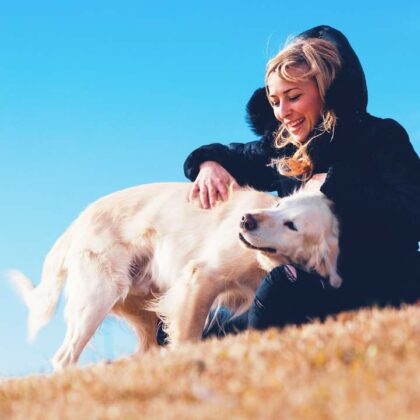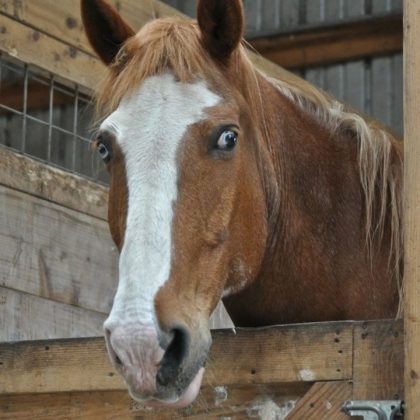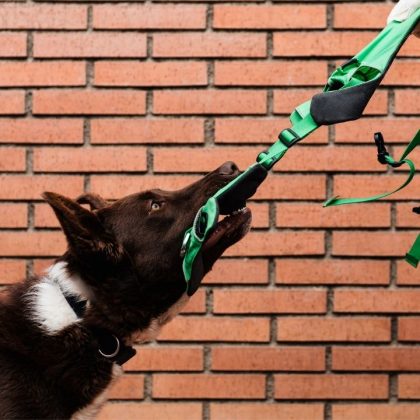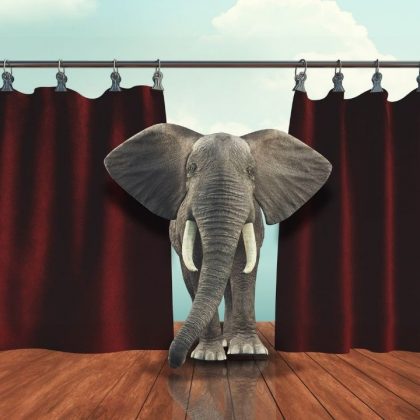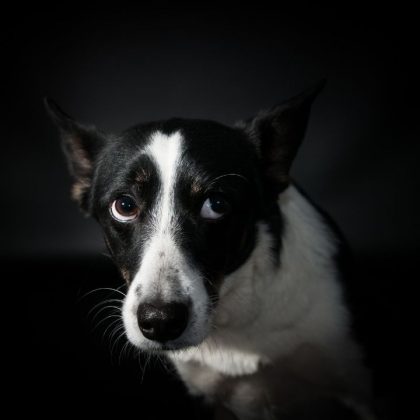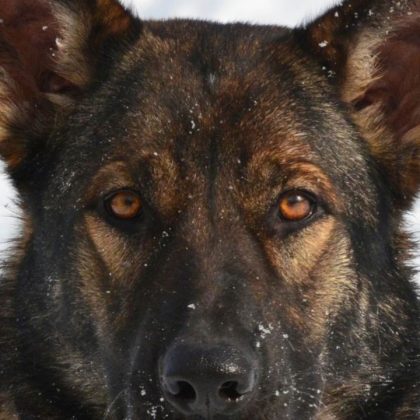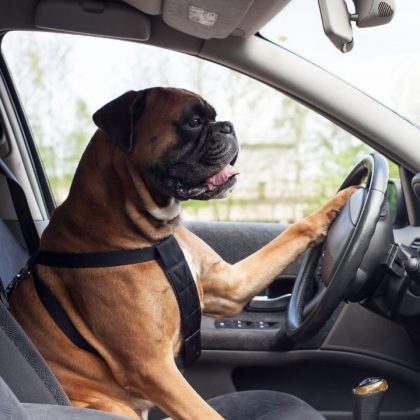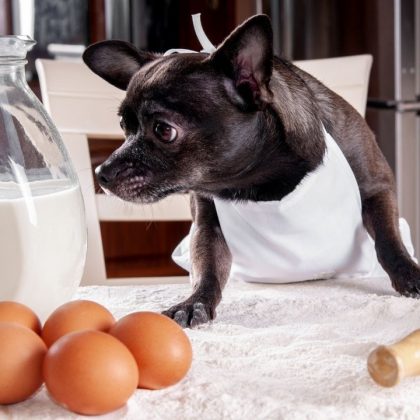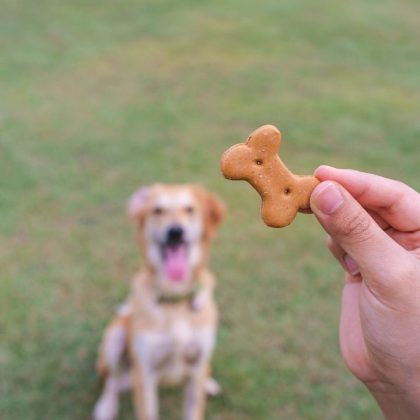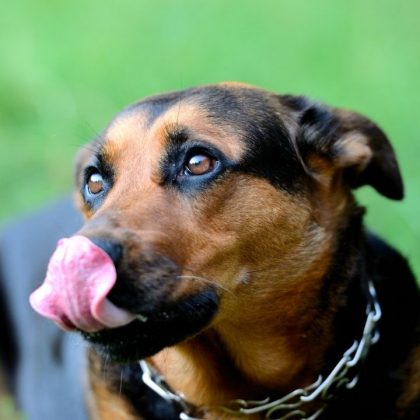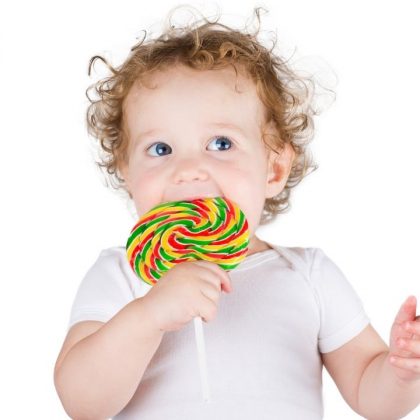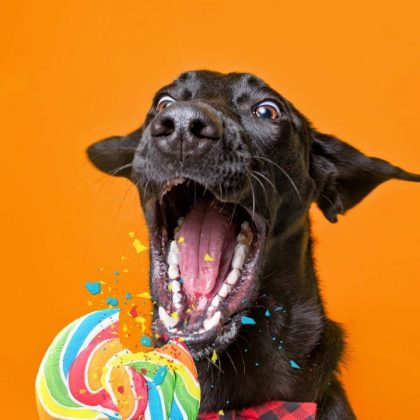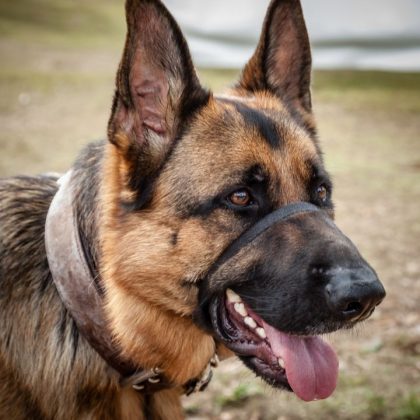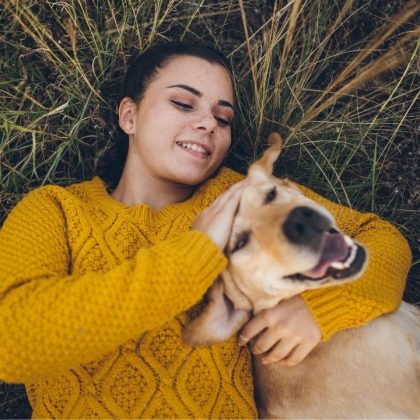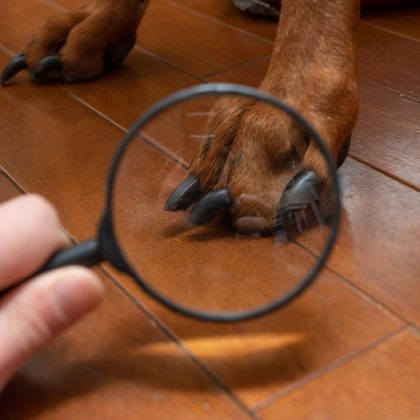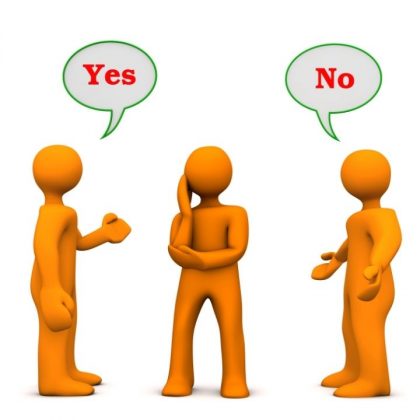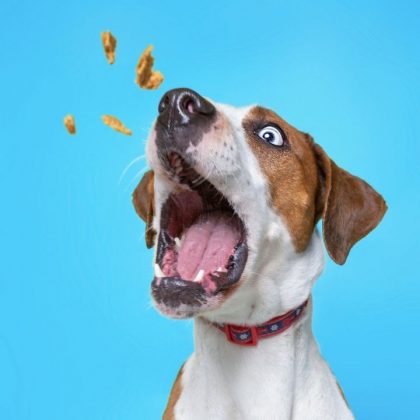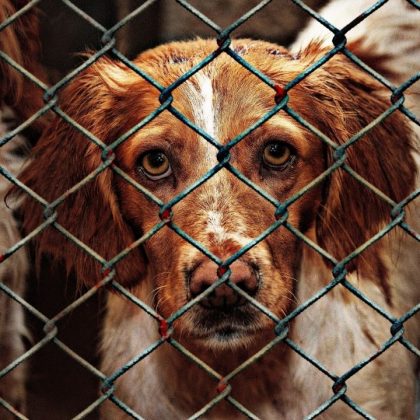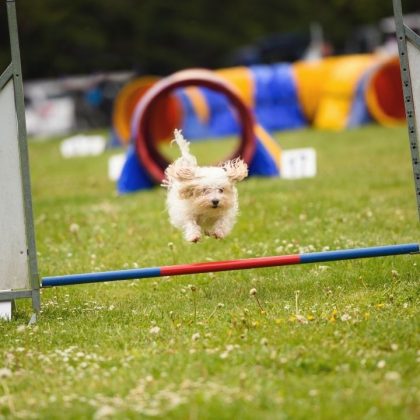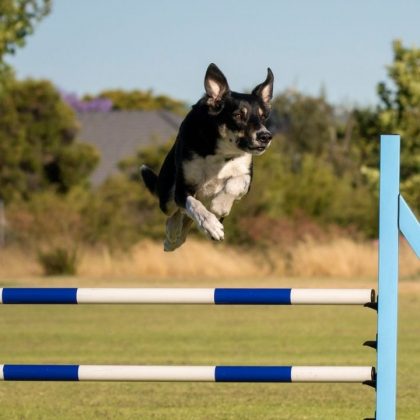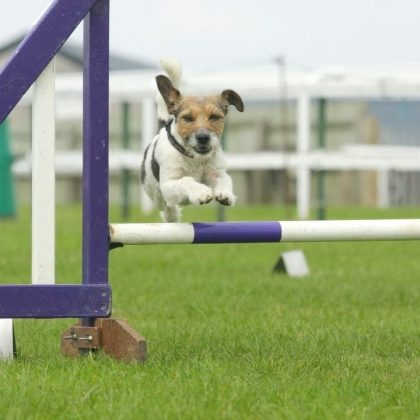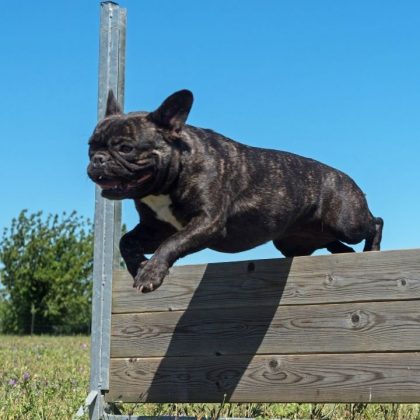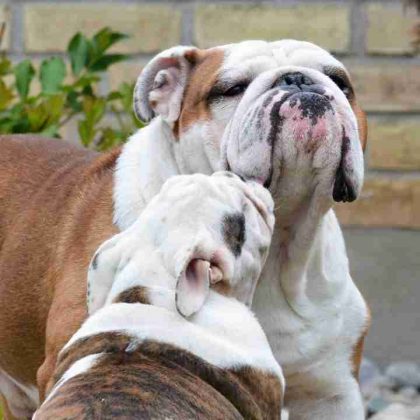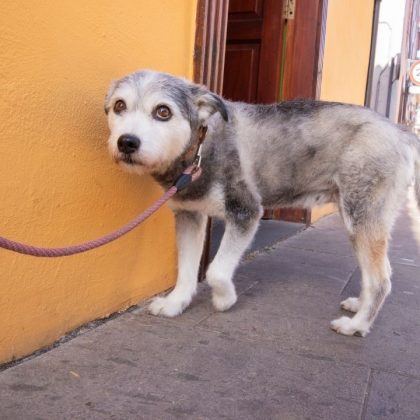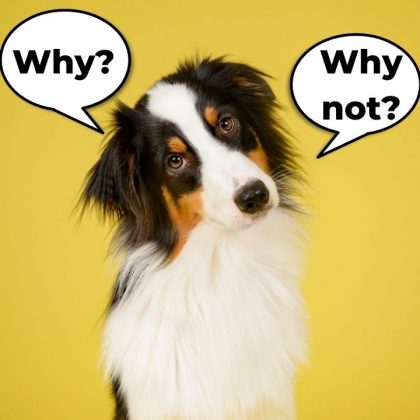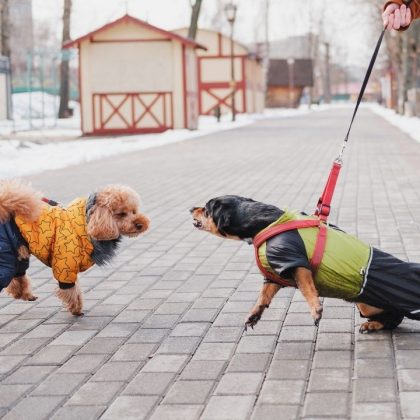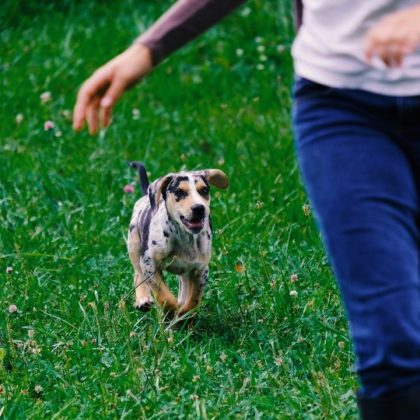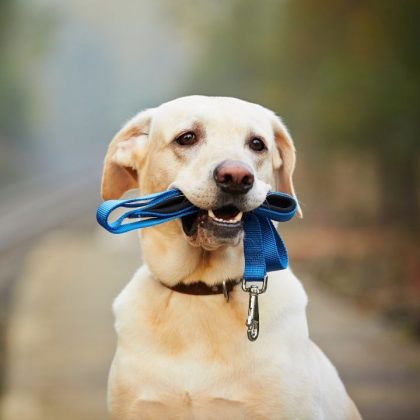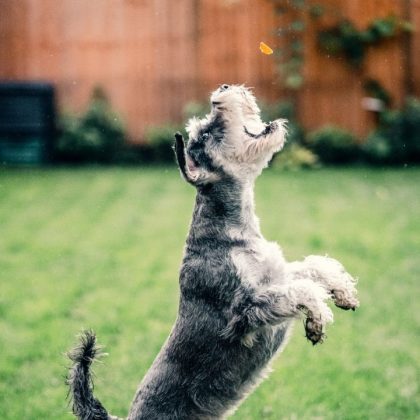Articles in English
This collection of FREE articles by Suzanne Clothier cover a wide range of topics on dog training, canine behavior, Relationship Centered Training and more.
Suzanne Clothier’s Articles
A Full Life is Shaped Just Right
What constitutes a full life for a dog? To define what we consider "enough” we have to ask the dog himself if his life is working for him. And really listen to his answer.
Loose Leash Walking: Easier with Horses Than Dogs?
Why do horses need fewer reminders than dogs for loose leash walking? It's far easier to teach a horse loose leash walking. Why? In all cases, both bio-mechanics and gait are involved.
Training or Restraining?
Equipment helps us to either train or restrain the dog, and sometimes both. In order to be fair to the dog and honest with ourselves, we need to be clear what we are doing and why.
Simple Questions, Simple Answers
An Argentinian journalist wanted to know:What are the main features of any dog training? What are the easiest dogs to train? Why? What are the most difficult dogs to train? What qualities do these dogs have? Here are my answers.
Reality Check
People (and animals) can and do change. Not easily, but altering behavior is possible and successful. Within limits. But what are the limits? How ethical is it for us to decide what is "right" and what needs to be "fixed"?
Put A Cushion Around Your Dog
Deliberately building that cushion of positive experiences around weird human behavior is a great gift to give any animal--the ability to cope with what they find scary or uncomfortable.
Perfectly Normal?
The unspoken message is if you just train enough and in the proper way using approved methodology, your puppy can grow into a "perfectly normal" dog. In essence, it's all yours to lose. Not true.
Mistakes and Becoming A Trainer
What sets the professionals apart from the "I've always wanted to be a trainer!" dreamers is the willingness to swallow hard on rough days where mistakes are big ones.
Look Into My Eyes
When a puppy looks our way, we notice, respond. In short, we're available for relationships, for connection, for conversation. offering countless opportunities to connect.
Drive and brakes and steering
Many handlers & breeders of "working" lines are big on having "drive". Unfortunately, some miss the important part about brakes and steering.
Dog Training & Recipes
There's a real longing for a recipe that tell you how to develop a wondrous relationship with your dog. So deep does this longing run that I've been the recipient of some anger shot my way when I refused to provide recipes.
All Interesting and Stuff
Real life rewards are wonderful. Particularly for this reason: the dog himself tells you what's valuable to him. What could be better than the dog making a list with you of all the things he thinks are really worth having?
“I had to…”
There are a few phrases that really push my buttons. When talking to trainers, the one that will always get a reaction from me is "I had to." It very often turns out there were other options available.
Why Not Take Candy From a Baby? (If he lets you!)
Each interaction with our dogs tells them something about us. The dog believes that just as he does, we say what we mean, and that there's a valid communication and intent to all we do with and for them - 24 hours a day.
Understanding Thresholds: It’s More than Under- or Over-
It is hard to know exactly where the sweet spot is, where learning and thinking occur. Understanding the Stimulus Gradient (SG) helps handlers recognize a threshold and make good decisions in any situation.
The Problem With Head Halters
Like any training equipment, halters must be used with care and with complete awareness of the possible effects on the dog physically, mentally & emotionally.
The Power of Social Interactions as Rewards
What is the best reward - treats? social interaction such as voice tone, touch, etc. as the reward? "it depends" is an important part of the answer.
The Habit of Excellence
Whatever the particular field or pursuit, what sets these people apart from others who would also bake a cake or play music or train a dog or repair the broken is this: the belief that excellence can always be improved upon.
The Fine Art of Observation
Understanding, analyzing and resolving behavior or performance problems requires a good deal of detective work. Sherlock Holmes knew no detail is insignificant. Observation skills and attention to detail is the hallmark of great trainers.
The 3 P’s: Does Your Dog Need Medication?
Three Ps, a simple "quick & dirty" assessment that helps me determine if I am going to refer the client and dog to a veterinarian (possibly a vet behaviorist if one is available) for possible therapeutic medication if warranted.
That Darned Dominance Debate
Dominance is an inadequate way to define complex interactions instead of what they are: moments, experiences, many points on a continuum, and changeable from situation to situation depending on so many factors.
Stop Poking Grandma! What’s Fair Between Older Dogs & Puppies
It would not be okay for a toddler to harass grandma; not okay for the puppy to harass the older dog. Some dogs are better at setting limits and teaching others how to behave.
Selecting Training Equipment
If your dog continues to pull, ignore signals, or tune you out, you may need to switch equipment. But many handlers continue to use equipment that frustrates them and/or the dog.
Rewards, Lures & Bribes
In living with and working with dogs, rewards as well as bribes and lures have a distinct place and value at certain points. What exactly is a reward, a bribe or a lure?
Permission, Not Permissive
When permission is implicit - meaning it's not actually stated - the dog understandably can become confused. Worse, the dog can end up thinking he can do what he likes without needing to check with you.
Of Hostages & Relationships
It is possible to have a relationship based on mutual respect, free from anything that remotely resembles sensory deprivation, and still have a dog who will work his heart out for you and even more importantly, with you.
JUMPING SERIES Part 4: Just Right Jumping
Jumping conditions are the classic Goldilocks situation: like Baby Bear’s chair, porridge and bed, things need to be just right. Unfortunately for our dogs, the conditions are often anything but just right.
JUMPING SERIES Part 3: I Think I Can!
When we talk about what a dog "knows," what we usually mean is what the dog understands about a specific skill in a specific context. Good training helps the dog learns that "jump" means the same thing under many conditions and despite distractions.
JUMPING SERIES Part 2: Can or Can’t? Physical Causes of Jumping Problems
Jumping problems are common, but rarely viewed as the dog's way of saying, I'm doing the best I can. Whatever your approach to teaching a dog in an attempt to fix a problem, the truth may be the dog physically can't do the job.
JUMPING SERIES Part 1: Why Fluffy Can’t Go Hup
Of all the skills we ask our dogs to perform at our request, jumping is one of the most misunderstood, least thoroughly trained, and most common source of performance problems in agility and obedience. This is the first of a series of articles that examine various aspects of training a dog to jump.
It Takes a Pack to Raise a Puppy
Note: This article originally appeared in the newsletter of the Siberian Husky Club of America. Not too long ago, I...
If Only That Hadn’t Happened, This Dog Would Be Fine
People have many explanations for why dogs act as they do. Sometimes the dog's history becomes baggage that the human carts along for the dog's entire life.
How Much Does Your Dog’s Cooperation Weigh?
A while ago, I began to realize that clients were constantly telling me how much their dogs weighed, but when...
Hard to Train?
Imagine two balloons hanging over your dog's head. One balloon asks "WHY?" The other asks "WHY NOT?" To the extent that we are able to provide satisfactory answers to those simple questions, an extraordinary amount of information can be communicated between ourselves and our dogs.
Handling On-lead Aggression
Perhaps one of the most embarrassing behavior problems is a dog who acts aggressively on leash, whether towards dogs, other animals or people. Recognize that on leash aggression always involves unintentional signals from the owner which create a vicious cycle. Here's how.
Green Eggs & Ham & Dog Training?
For most dog owners, Dr. Seuss's classic tale Green Eggs & Ham seems an odd place to look for inspiration. But as a Greek mathematician soaking in his tub found out centuries ago, inspiration can be found in the most unlikely places.
Even Though…
We understand that the world is full of many things our dogs may find far more interesting than we are. Many handlers often excuse their dog's excitability, which can lead to many behavior problems. "Even though . . ." might help.
Dog is in the Details
People often mis-read or misunderstand dog language, relying on a crude understanding of basic postures without sensitivity to how dogs convey in precise detail what they are trying to say.
Dances With Dogs
Linda Tellington-Jones uses a beautiful analogy to describe her approach to working with animals: she sees the interaction between human...
Connection & Control
Connection is about two minds working together. If the connection is not there between you and your dog, you will be unable to direct him, help him or really train him. It takes time and practice to create a steady state of connection.
Bones Would Rain from the Sky
"I believe that I have seen dogs praying to whatever gods dogs pray to, their prayers as silent but surely as heartfelt as our own. And this dog was praying for the leash to break." [excerpt from Bones Would Rain from the Sky]
AGGRESSION: A Case History with Harry T
This case history is taken from an actual case; "Harry T." is not his real name - it seemed kinder to keep the names of the real people & dog out of the story. "Harry" agreed that this is a pretty accurate interpretation of his tale.
Aggression Basics
There is a widespread misunderstanding of what constitutes aggressive behavior. Very often, what is labeled as 'aggression' is actually a useful and meaningful communication meant to avoid any violence.
Aggression & Some Reasons Behind It
The wide range of behaviors labeled as aggression are communications from the dog to us. Dogs do not snap, snarl, growl, or bite without reason, and those reasons can range from feeling afraid to being confidently challenging.
10 Tips for Problem Behavior
At one time or another, every owner has to deal with problem behavior. Understanding why your dog does what he does, and how to handle the situation correctly can help resolve problems quickly.
Here are some basic guidelines that apply to nearly all problem situations:

